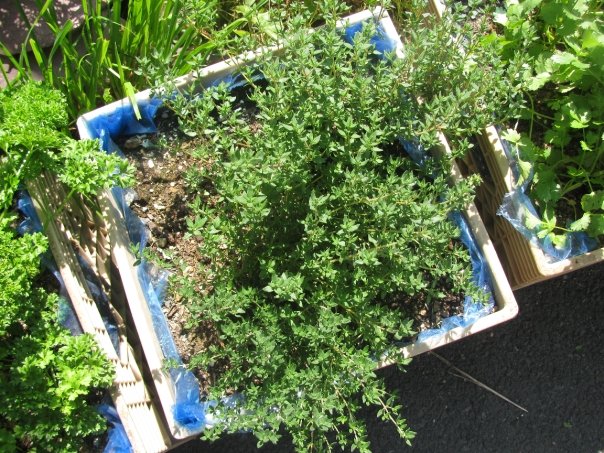 Note: This is the second post from RCR Committee member Faeterri Silver. Faeterri has been a teacher and in practice in whole health fields for over 30 years. Her passions are the organic growing of vegetables and herbs, the identification of wild foods and medicines, and the preservation of those products. She lives in the community of Cape Ray on the southwest coast when in NL and looks forward to sharing her knowledge as she also continues to learn and grow.
Note: This is the second post from RCR Committee member Faeterri Silver. Faeterri has been a teacher and in practice in whole health fields for over 30 years. Her passions are the organic growing of vegetables and herbs, the identification of wild foods and medicines, and the preservation of those products. She lives in the community of Cape Ray on the southwest coast when in NL and looks forward to sharing her knowledge as she also continues to learn and grow.
It is so cool to me to see my perennial herbs come back each year. The use of fresh and preserved herbs makes meals taste and smell more appetizing and adds rich nutrition.
The extra hardy herbs are oregano, scallions and chives. Sage, thyme and tarragon need a little mulching in the fall to guarantee a good return. Chives and scallions are members of the onion family. Oregano, sage, and thyme are members of the mint family and can take over the garden so decide where you want your herbs to grow. Tarragon is a member of the sunflower family. If herb plants get too woody, cut them down a few inches above the ground to encourage tender new growth. When buying transplants, smell the leaves first because different varieties have stronger flavours. The flowers of herbs are also edible and add nice colour to meals. One only needs to use herbs sparingly because of their full flavours. They are usually added at the end of cooking because over-cooking results in evaporation of their valuable essential oils.
Most herbs are packed with Vitamins A, beta-carotene, C, E, K and B-complex and are high in the minerals iron, calcium, potassium, zinc, copper, selenium, manganese and magnesium, some exceptionally. They are also high in dietary fiber, anti-cancer phytochemicals, anti-oxidants and contain essential oils that can have anti-fungal, anti-septic, or anti-bacterial properties. Culinary herbs can stimulate appetite or encourage mental clarity.
Fresh leaves are harvested before the plant flowers and can simply be snipped with scissors. Once the plant flowers, I do not harvest any more leaves until about a month before the first frost. Freshly washed leaves can be stored in the refrigerator wrapped in a slightly damp paper towel for a week to 10 days. Herbs can be preserved through drying, freezing, as pesto, or in vinegars or oils. If you are near St. John’s, I hope you can go to the workshop on preserving herbs at the Memorial University Community Garden on August 1st.
Scallions, green onions and chives have sulfur compounds that are released when leaves or bulbs are crushed or cut. They add flavour to soups, salads, potato, and egg dishes, as well as sauces, dressings and dips.
As far as I am concerned, if one makes Italian food at all, one must have oregano in the kitchen. I prefer Greek oregano which is a little spicier. But oregano is also in Mexican and Mediterranean dishes. Try using oregano in a new way, like in this recipe for grilled fish with oregano sauce.
Sage is a warm and fragrant herb that is used in stuffing, stews, eggs, soups, sauces, beans, vegetables, sausages, poultry, fish, pork and mushrooms. It is also used as garnish in herb salads.
Thyme is a low growing bushy herb. Two commonly grown varieties are German thyme and lemon thyme. It is used in soups and sauces, for chicken, fish and meat recipes, with winter squash, drinks, vegetables, and rice.
Tarragon has a unique aroma and is used for eggs, tomatoes, mushrooms, potatoes, vinegars, mustards, sauces, soups, in green salads, and as a flavoring base to fish, lamb and poultry.
Enjoy eating flavourfully and well with herbs. In my next post I’ll cover the annuals: basil, dill, and cilantro, and the biennial parsley.
In the meantime, here are a few other helpful resources for growing, eating and preserving herbs:
Preserving Herbs in the Kitchen Part 1 and Part 2




